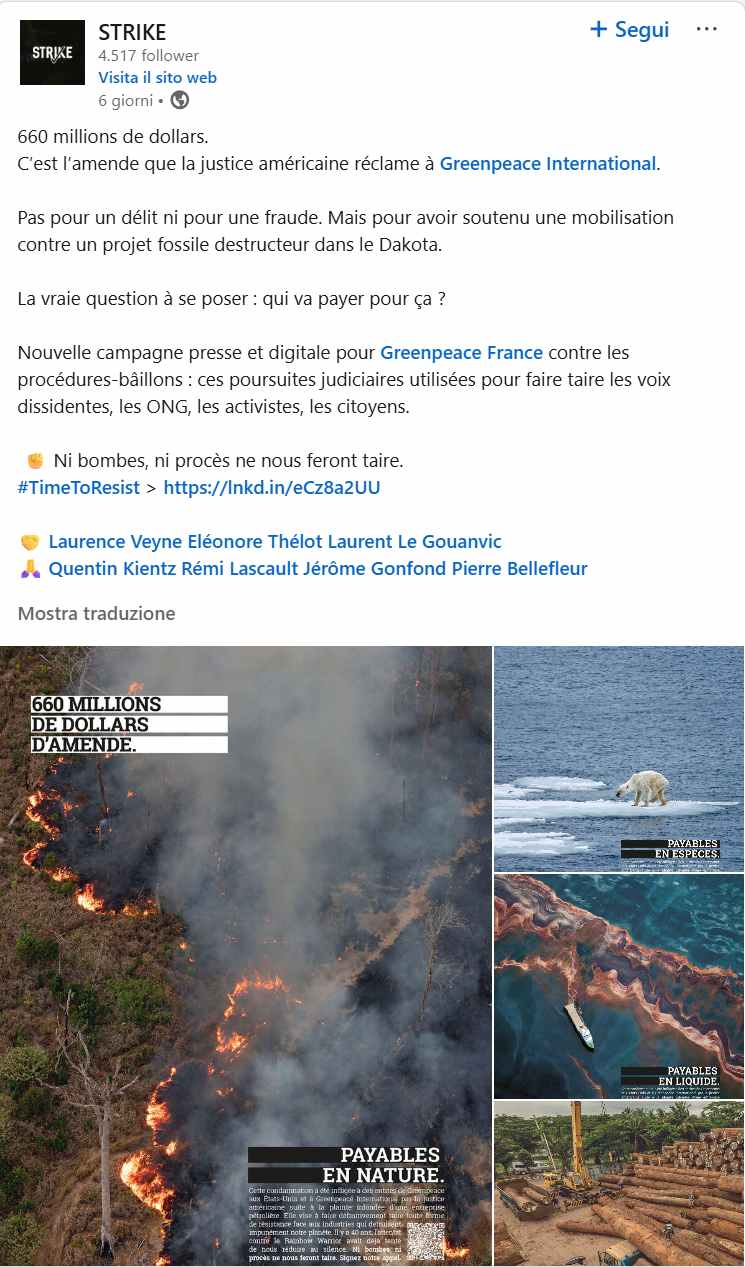Greenpeace faces a $660M SLAPP lawsuit for backing Dakota Access protests. The case threatens free speech and fuels a powerful new campaign: "Who will really pay for this?"

@STRIKE/LinkedIn
Greenpeace International is facing one of the most staggering legal threats in its history: a jaw-dropping $660 million fine handed down by a U.S. court. The charge? Supporting peaceful protests against the controversial Dakota Access Pipeline back in 2016. The oil company behind the pipeline, Energy Transfer, alleges that Greenpeace’s advocacy amounted to a defamatory campaign designed to sabotage the project.
This lawsuit isn’t just about financial damages. It’s a textbook example of what’s known as a SLAPP — Strategic Lawsuit Against Public Participation. These kinds of legal actions aren’t filed to seek justice; they’re crafted to intimidate, drain resources, and silence dissent. And while Greenpeace is in the crosshairs this time, the real target is anyone who dares to speak out against powerful economic interests.
Who really pays the price?
In response to this legal offensive, Greenpeace France has launched a searing visual campaign created with STRIKE agency. It features four haunting images: a spreading oil slick, a burning forest, a polar bear stranded on a crumbling ice sheet, and a ravaged tropical jungle. Across them, a stark question is scrawled: “660 million. Who will really pay for this?”

@STRIKE/LinkedIn
This isn’t just artistic provocation—it’s a direct challenge to the narrative being pushed by corporate powers. The images flip the script: if Greenpeace is penalized for speaking out against environmental devastation, then who is held accountable for the devastation itself?
It’s not a rhetorical question. The stakes are high, not just for Greenpeace, but for the global climate movement. If organizations are punished for raising the alarm, we’re left with a terrifying silence in the face of crisis.
Resistance isn’t new—it’s in greenpeace’s DNA
Greenpeace is no stranger to retaliation. In 1985, the French secret service bombed the Rainbow Warrior, the NGO’s flagship vessel, in an effort to quash protests against nuclear testing. It was a deadly move to silence environmental activism. And yet, Greenpeace didn’t back down then—and it’s not backing down now.
With the hashtag #TimeToResist, the organization is tapping into that same defiant spirit. A new petition, already signed by over 120,000 people, is rallying supporters to take a stand against what they call an attack on fundamental rights.
As legal and political pressures mount, Greenpeace’s message is clear: the environmental movement will not be intimidated into silence. Instead, it will adapt, resist, and push back—with creativity, solidarity, and global support.
